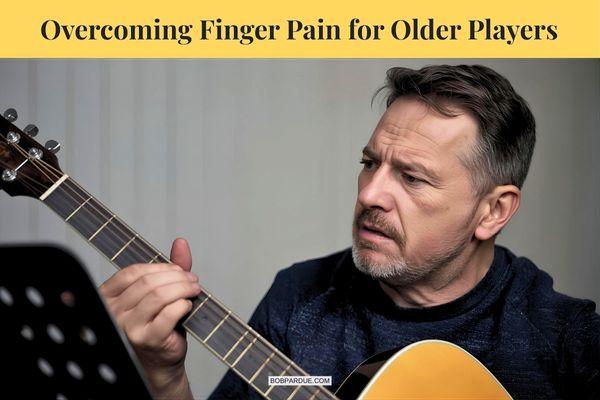Overcoming Finger Pain: Tips for Older Guitar Beginners
Learning guitar after 40 is a rewarding journey, but it often comes with one big challenge—finger pain. If you’ve recently picked up the guitar and felt discomfort in your hands, you’re not alone. Many older beginners deal with stiffness, arthritis, or just the natural adjustment period of pressing down on steel strings. The good news? There are practical guitar finger pain solutions that can make your learning experience far more comfortable.
Why Finger Pain Happens for Older Guitarists
As we age, our joints and muscles naturally lose some flexibility. Add in conditions like arthritis or tendon stiffness, and playing guitar can feel daunting. Even if you’re in great shape, pressing down on strings with proper technique requires muscles that haven’t been used in this way before. Recognizing this is the first step toward fixing it.
Start with Proper Guitar Ergonomics
One of the best guitar tips for older players is to focus on body position. Slouching or holding the guitar at an awkward angle can make finger pain worse. Instead, sit in a supportive chair, keep your back straight, and rest the guitar where your picking hand feels natural. Consider a footstool or guitar support to raise the instrument slightly, reducing wrist strain. Proper guitar ergonomics for adults will help you play longer and avoid unnecessary discomfort.
Warm Up Before Playing
Just like athletes stretch before running, guitarists benefit from warming up. Gentle finger exercises for guitarists prepare your hands for movement and reduce pain later. Try slowly opening and closing your fists, rotating your wrists, or lightly pressing each finger to your thumb in sequence. These small actions get blood flowing and increase flexibility.
Build Calluses Gradually
Finger soreness often comes from pressing strings before calluses have fully developed. Instead of long, painful practice sessions, aim for shorter, more frequent ones. Even 10 to 15 minutes a day can toughen your fingertips over time without leaving you discouraged. This approach is especially helpful if you’re playing guitar with arthritis, since shorter sessions limit strain.
Choose the Right Gear
Your guitar setup makes a huge difference. Lighter gauge strings require less pressure and can ease finger fatigue. Nylon-string guitars also feel softer compared to steel strings. If possible, have a guitar technician check your instrument’s “action” (the distance between the strings and fretboard). Lower action means you won’t have to press as hard, making the guitar much easier to play.
Practical Finger Pain Solutions
- Use warm water soaks before practice to loosen stiff joints.
- Take regular breaks to avoid overuse.
- Stretch fingers gently between practice sessions.
- Switch to chords with simpler shapes while building strength.
- Try cushioned guitar picks to reduce hand tension.
Focus on Easy Wins
When starting out, it’s tempting to jump straight into difficult songs. Instead, celebrate small victories. Begin with simple one-finger chords or easy strumming patterns. Resources like the Printable 6-in-1 Beginner Guitar Starter Pack can guide you through chord charts, exercises, and basic progressions that won’t overwork your hands.
Keep the Long-Term View
It’s easy to feel discouraged if progress feels slow, but remember: guitar is a marathon, not a sprint. Whether you’re learning at 40, 60, or beyond, your musical journey can be just as fulfilling. If you need extra encouragement, check out BobPardue.com for more beginner-friendly lessons and supportive advice.
Next Steps for Beginners Over 40
If finger pain is holding you back from learning full chords, you’ll find practical guidance in Mastering Guitar Chords for Beginners Over 40. This resource breaks down chord shapes into manageable steps while keeping comfort in mind.
Final Thoughts
Finger pain doesn’t have to stop you from enjoying music. With proper technique, the right gear, and some patience, you can overcome the challenges of learning guitar later in life. The key is consistent practice, smart adjustments, and giving yourself grace along the way.
Ready to make your practice sessions easier? Download my free PDF guide to simple guitar chords for beginners at this link. It’s a great way to build confidence while keeping your fingers happy.
